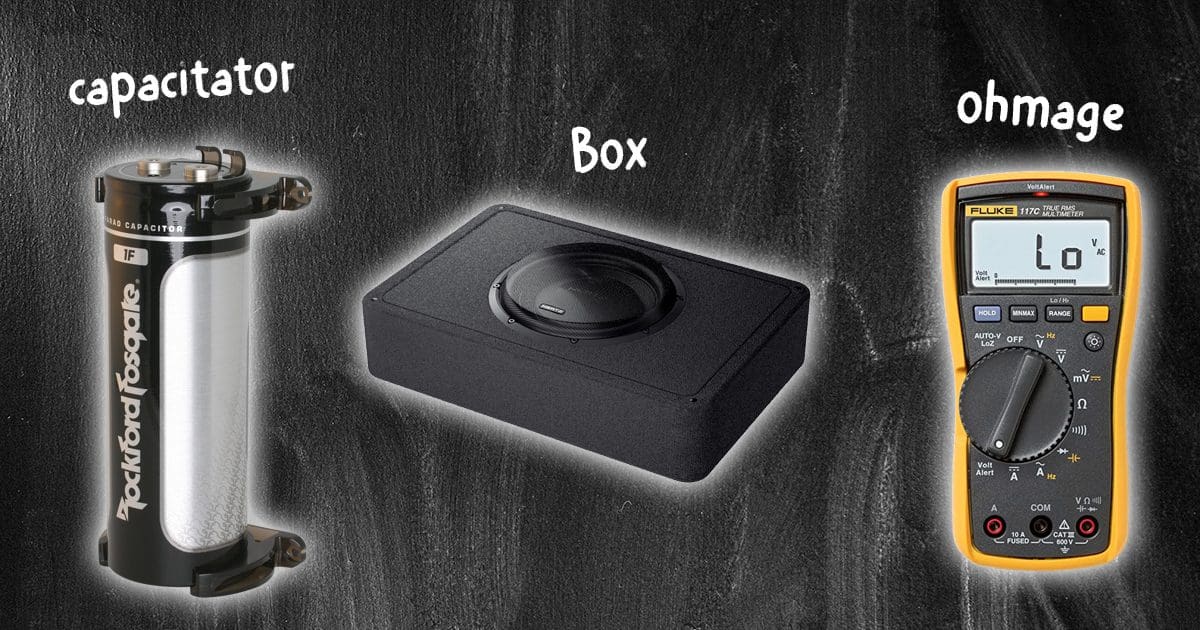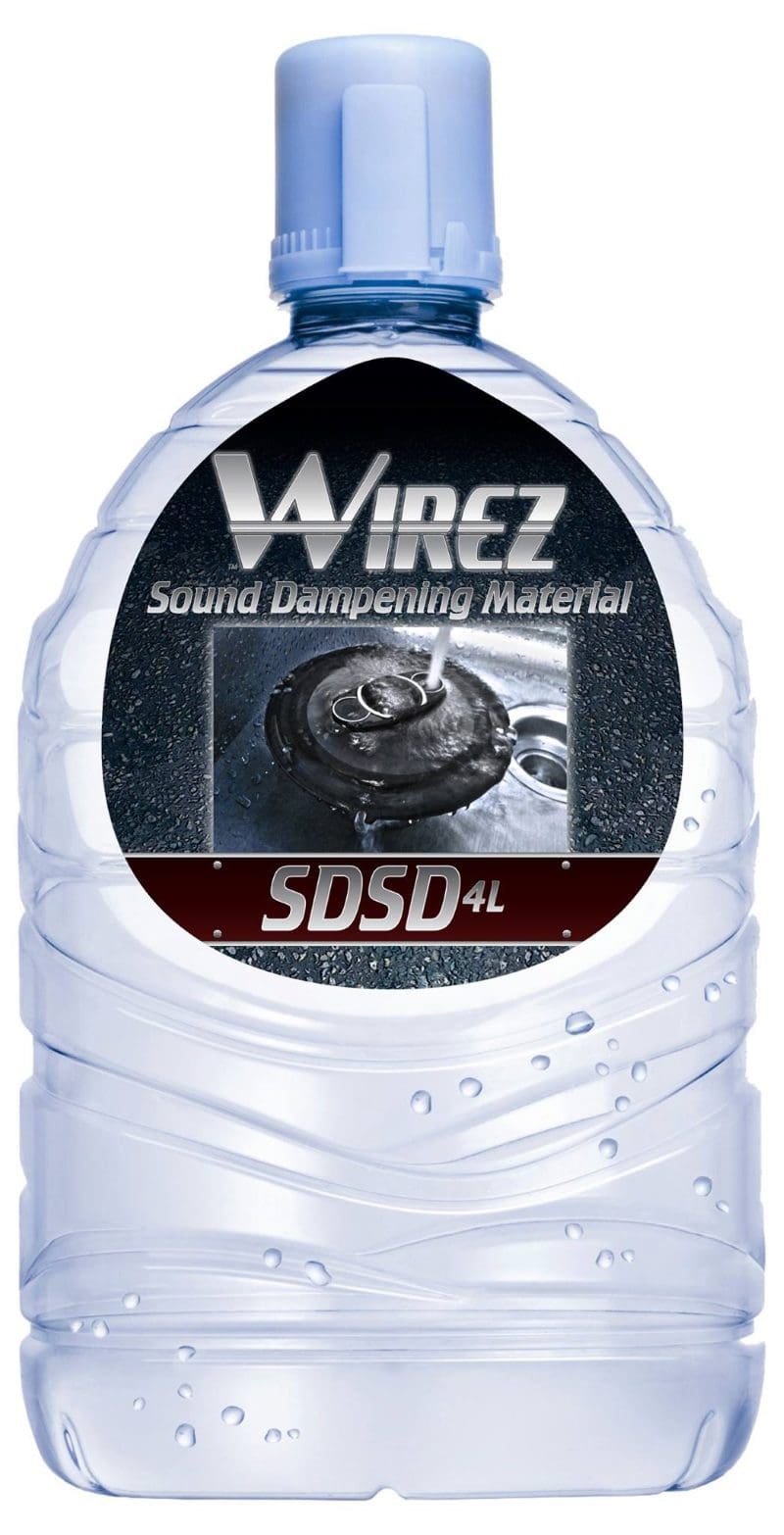You may want to know these 10 car audio terms if you’re headed to a store to shop for audio equipment. You’ll likely get what you want using everyday slang and accepted terminology. So invest a few minutes in educating yourself to sound as though you know what you’re talking about. No? OK, then, at least have a laugh with us!
1. Subwoofer Enclosure
Unless you’re having an infinite baffle system installed in your vehicle, your subwoofers are going to need some sort of enclosure. It’s not a box. That’s the cardboard packaging the subwoofer ships from the manufacturer to the store. You could also call it a cabinet, though that’s an older term that home audio guys tended to use in the 1970s. So, you don’t need a subwoofer box; you need a properly designed and constructed subwoofer enclosure.
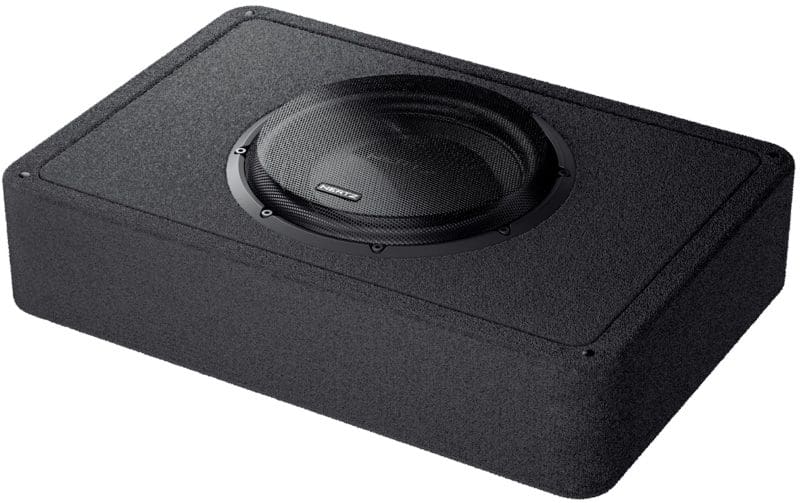
2. Nominal Impedance
Speakers and subwoofers are sold with different nominal impedances. Most folks refer to speakers as being a 4-ohm or dual 2-ohm unit. Speakers aren’t resistors. Speakers present different amounts of opposition to AC signal flow at different frequencies and drive levels. You can ask for a “dual 4-ohm subwoofer” or a “2-ohm door speaker,” but asking how many ohms a speaker is isn’t technically correct. You’d ask, “What’s the nominal impedance of these speakers?”
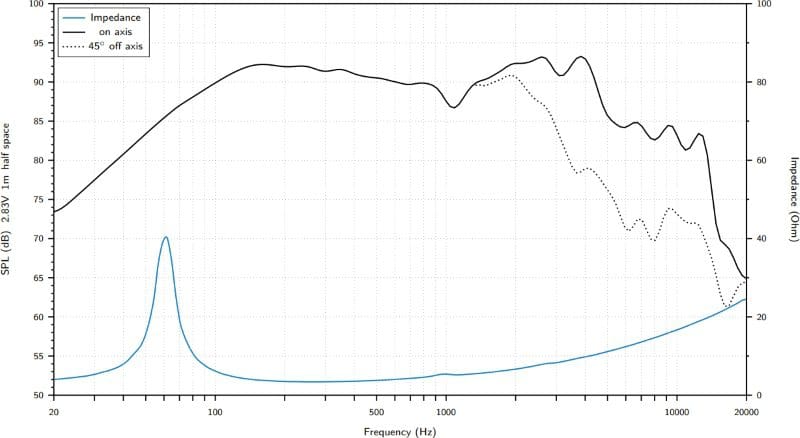
3. Remote Car Starter
This one is pretty simple. Whether you call it a car starter, remote starter, electric start, keyless start, start-from-far (yes, really!), wireless starter, automatic starter, autostart, Command Start (which is a brand), Compustart (which should be Compustar) or something way off in left field, nobody is going to look at you funny. Your local retailer’s product specialist will likely dive right into helping you figure out which system is the best for your vehicle, based primarily on where you park it at home or work. Nevertheless, the proper term is remote car starter.

4. Bass Reflex and Acoustic Suspension Enclosures
Though everyone refers to them as vented or ported enclosures, the proper term for a speaker or subwoofer enclosure with a resonant vent is a bass reflex enclosure. The same goes for sealed enclosures. Their proper name is an acoustic suspension enclosure. We know these aren’t going to change anytime soon, so carry on!
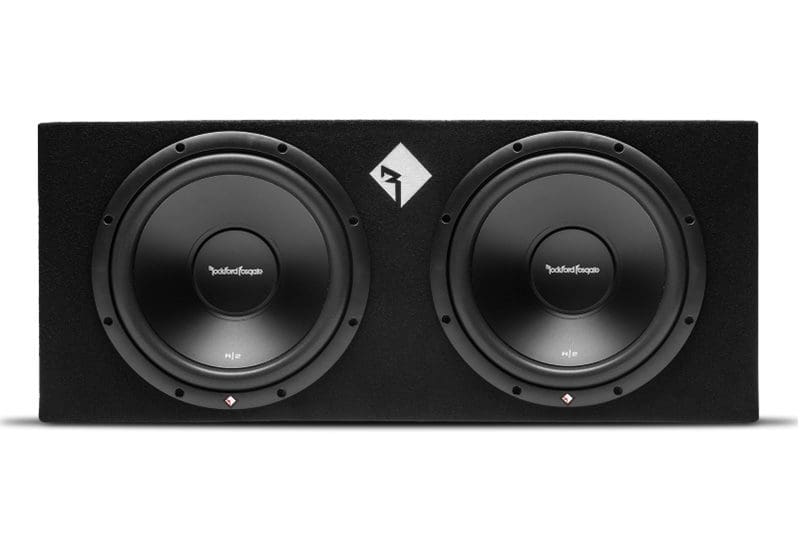
5. Short Circuits
We can’t count the times consumers have walked into a store to ask for help with their audio system, proclaiming that there “must be a short.” If there were a short, a fuse would have blown, or a wire would have melted and filled your vehicle’s interior with putrid white smoke. If there is a short on a speaker wire, the amp will go into protection. The problem is usually that something wasn’t connected correctly or configured properly or that a component is defective. Also, it likely isn’t a loose wire either. If you need help, forego the attempt to tell us what you think is wrong. Instead, explain the symptoms and schedule an appointment. We’ll figure it out!
6. Tuning
We must admit that the term “tuning” is one that even car audio professionals abuse a bit. As a verb, the word “tune” refers to the adjustment of the pitch of a musical instrument or the process of adjusting a radio receiver to a specific station. You would “tune a guitar” or “tune into a specific radio station.” In car audio systems, we aren’t really tuning anything when crossovers, sensitivity controls, equalizers or digital signal processors are being adjusted. We are configuring or calibrating the system.
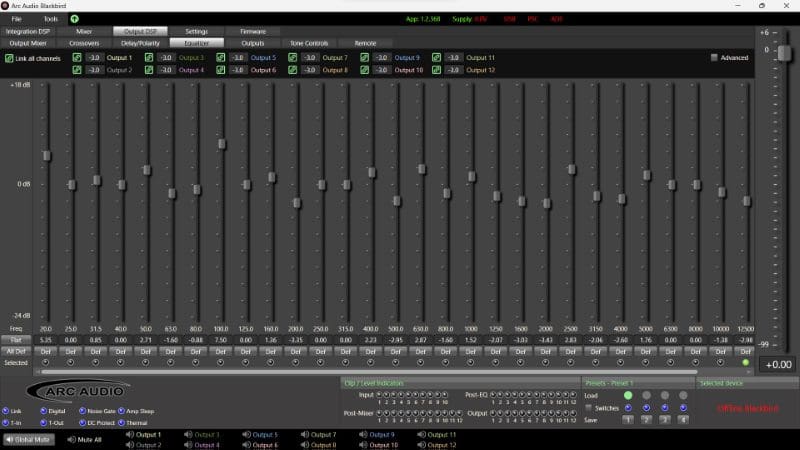
7. Voice or Talk
We’ve heard many instances where a client will ask for “more voice” or “more talk” from an audio system. This is a pretty good description of what you want us to upgrade, and we appreciate that! However, if you want to be technically accurate, ask for “more vocals” or “more midrange output.”
8. Box Rise
OK, we’re not sure where the term “box rise” came from, but unless you’re asking for a few pieces of wood or plastic to lift a speaker enclosure off the floor, it’s not a thing. Subwoofers in enclosures are, as we mentioned, reactive devices. They have an impedance curve that varies with frequency. At the resonant frequency of the driver and the enclosure, there’s a large spike in the impedance.
Secondly, the impedance of a voice coil goes up significantly when it gets hot. If you’re talking about the impedance of a subwoofer in the context of a car audio SPL competition, the increase in impedance between the beginning and the end of the “run” is based purely on the increased heat in the voice coil winding. If it’s anything, it’s “heat rise,” but it’s not that. It’s simply an increase in resistance.
Damping Factor and Slew Rate
Often companies will manipulate or promote a specific measurement in an effort to portray their product as being superior to another solution. In car audio parlance, the terms “damping factory” and “slew rate” are perfectly misleading examples. An amplifier with a high output impedance doesn’t dampen the motion of a speaker cone better. It does, however, have a smaller change in frequency response relative to the impedance of the load. The slew rate refers to how quickly the output voltage of a device can change. Nobody on the planet needs an amplifier than can produce its full power at 20 kHz. At most, we might need 10%, but that number is closer to 2 or 3%. Talking about slew rate offers more information about frequency response than anything else.
Sub-Stage
So far, most of the terms we’ve discussed have been variations on something that sort of makes sense. The term “sub-stage” doesn’t make sense. There is a “soundstage,” which refers to a left-to-right plane where it sounds like your music is coming from. A widely used and accepted term is the “front stage,” which refers to the speakers in the front of the vehicle that will be used to create the soundstage. People saying, “I’m building the sub-stage next,” mean to say, “I am building the subwoofer enclosure next.” Please stop saying “sub-stage.” Frankly, it’s ridiculous.
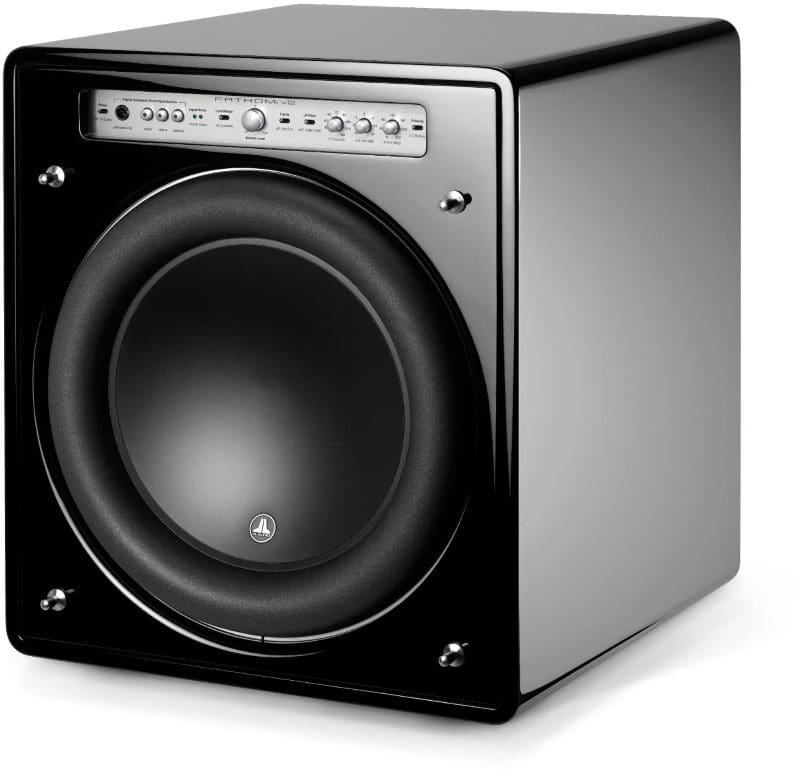
Bonus Car Audio Slang and Confusion
Here are a couple of additional terms that are more slang than technically accurate. A subwoofer enclosure installed in the bed of a pickup truck feeds into the cab’s interior through a large opening in the back wall of the cab, and a similar hole in the bed is often referred to as a “blow through.” Most professionals call this a “bed cut” or a “cut through.” Whatever you call it, it sounds like a recipe for lots of bass!
Though less about audio, the infamous Blow-N-Go is another name for an ignition interlock. Some also call it a breathalyzer, but technically, that’s the device law enforcement agencies use to measure the blood alcohol level of someone who may be driving while impaired.
Though the dictionary says “dampen” is a vibration reduction, most professionals in the car audio industry refer to products like Dynamat and Sound Shield as sound deadening rather than sound dampening. The lads at Wirez had this figured out on April 1st many years ago.
It’s called a capacitor, not a capacitator.
Also, the company is called Harman Kardon, and the stylized name is written as “harman/kardon” on their products. So it’s not Harman Kardan or Harman and Kardin. The parent company, which also owns JBL, Infinity, AKG, Lexicon, Mark Levinson and Revel, is Harman International Industries Limited. It’s not Harmon, Harmen or Harmin.
A passive radiator isn’t another speaker. If it’s anything, it’s closer in function to a vent in a bass reflex enclosure.
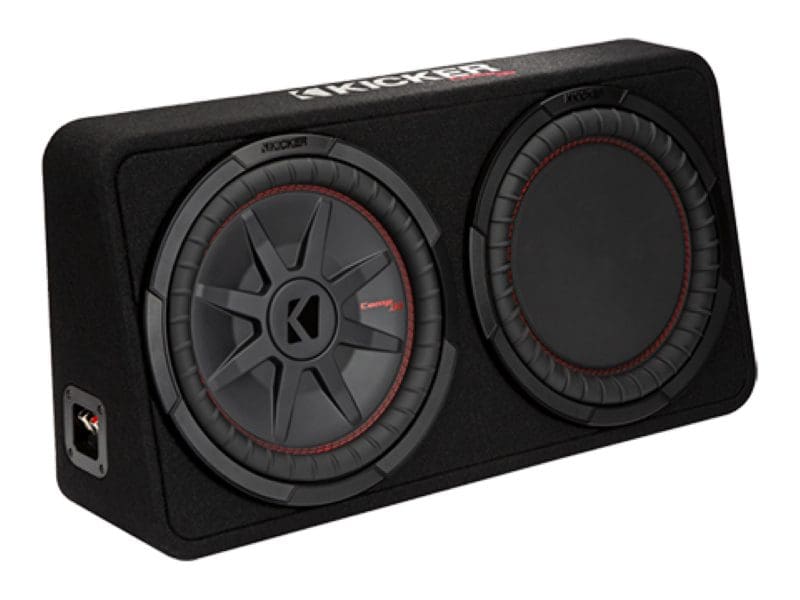
The last one is the phrase “measuring ohms.” If you’re using a multimeter to quantify the opposition of DC flow in a resistor or through an electrical connection, you are measuring its resistance. The unit used to describe the opposition of current flow is the ohm. You don’t “measure ohms”; you “measure resistance.” Likewise, you wouldn’t ask for a speaker with “more ohms”; you’d ask for one with a “higher impedance.”
In all reality, as long as you’re talking about professional car audio equipment and expert installation, we’re happy. We just wanted to have fun with the strange terminology we hear on social media and at events. If you want to sound more like a car audio expert, hundreds of articles published here at BestCarAudio.com explain in amazing detail how everything from speakers and subwoofer enclosures to amplifiers works.
